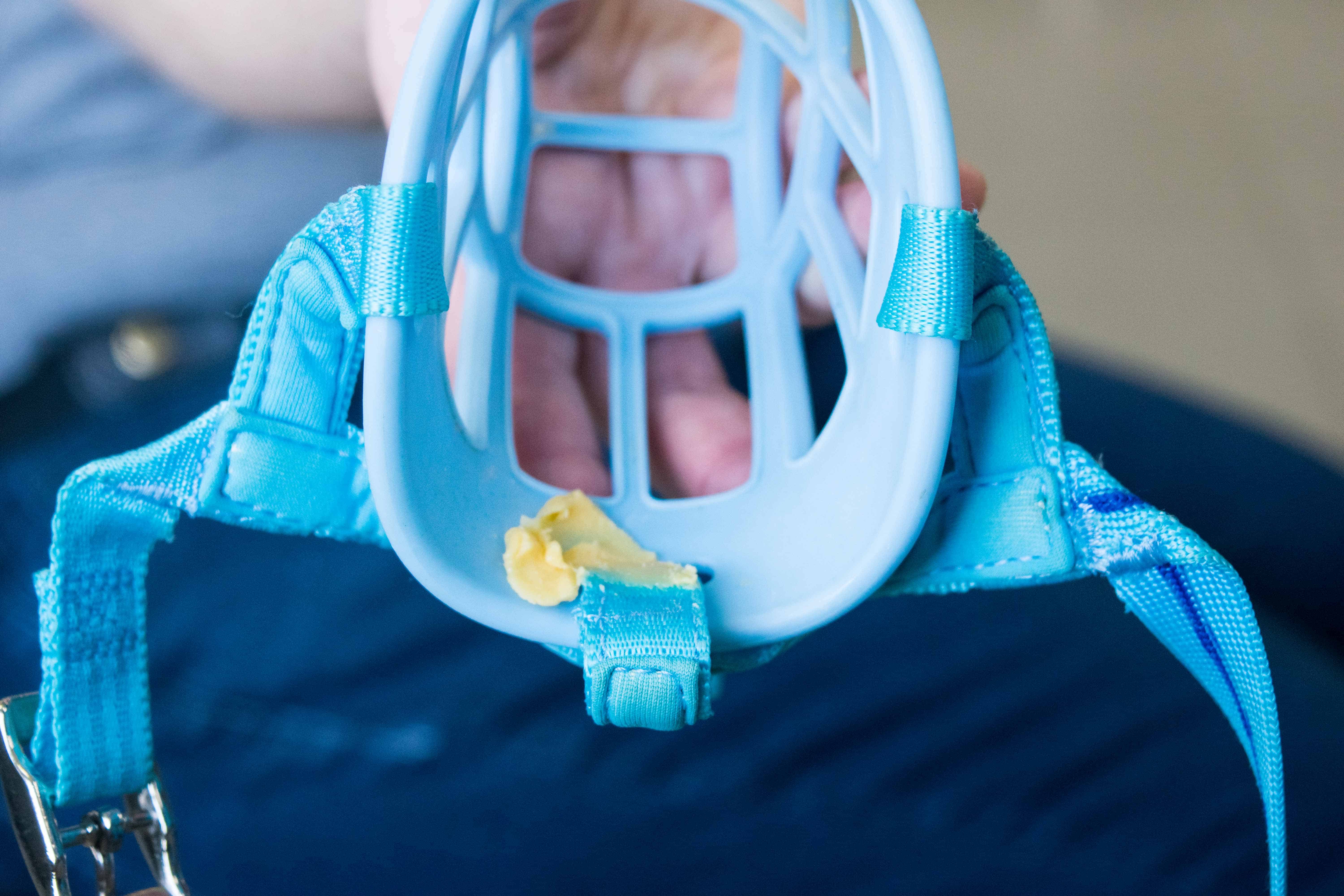
Alternatively, put the muzzle on before playing with your dog, or before taking them for a walk. Try putting your dog’s muzzle on before you start a training session at home. Your dog may not need to actually wear a muzzle at the moment, but it’s still important to incorporate the muzzle into your daily routine. Muzzle Training Step 3: Wearing the Muzzle Regularly Keep practicing fastening the muzzle, slowly leaving it on a little longer each time. Go back a few steps, ensuring that your dog is truly comfortable with the muzzle before you try to fasten it. If your dog panics or tries to paw the muzzle off, then this means that you’ve moved too fast. Then, give them a treat, followed by a few more, before removing the muzzle. However, before giving them the treat, fasten the straps of the muzzle around your dog’s head. You’ll now need to repeat the previous step of encouraging your dog to put their nose into the muzzle. Muzzle Training Step 2: Putting the Muzzle On Again, keep repeating this until your dog is happy to put their nose into the muzzle. Hold the treat behind the muzzle, so that your dog will only be able to reach it by putting their nose into the muzzle. Once your dog is happy with that, you’ll then need to hold the muzzle with one hand and have a treat in the other. Then, gently touch the muzzle to your dog’s nose. Let your dog sniff it, and then give your dog a treat. To do this, start by showing your dog the muzzle. You want your dog to be happy and excited whenever they see you bringing the muzzle out, because they know that the muzzle means that something good is about to happen. The main aim when you first begin muzzle training is to build up positive associations with the muzzle. Muzzle Training Step 1: Introduce Your Dog to the Muzzle They may seem a bit prison-like, but they’re actually the kindest since they still allow the dog to comfortably eat, drink, and pant.Īlways avoid muzzles that wrap around your dog’s nose and hold their mouth closed. They look just like a basket/cage that fits over your dog’s nose and mouth. Out of all the styles available, basket muzzles are the best. If you’ve never bought one before, knowing which to pick can seem overwhelming. There are so many different muzzle styles out there. Whether this may be animal waste, chewing gum, or anything else, a muzzle can help to keep your dog safe while you work on training the issue. If your dog ends up being attacked by another, then this could trigger them to act defensively around other dogs in the future, making a muzzle very useful.įinally, some dogs also need a muzzle because they eat inappropriate things while on a walk.

Reactivity can also develop at any point in a dog’s life.

If your dog is already muzzle trained, they’ll happily accept the muzzle, making the whole experience so much less stressful for them. They likely won’t be very receptive to a vet exam – pain can cause even the most placid dog to snap. Imagine that your dog gets injured at some point in the future, leaving them in pain. However, for everyone else, muzzle training is still important.

The most obvious reason for muzzle training is if you have a dog that’s prone to biting, or even just a reactive dog that could potentially bite.
#MUZZLE TRAINING PUPPY HOW TO#
We’ll also be sharing some tips on how to muzzle train your dog. Every dog should be muzzle trained – stick with us as we explain why. Many people believe that only aggressive dogs need to wear a muzzle, but this couldn’t be further from the truth.


 0 kommentar(er)
0 kommentar(er)
